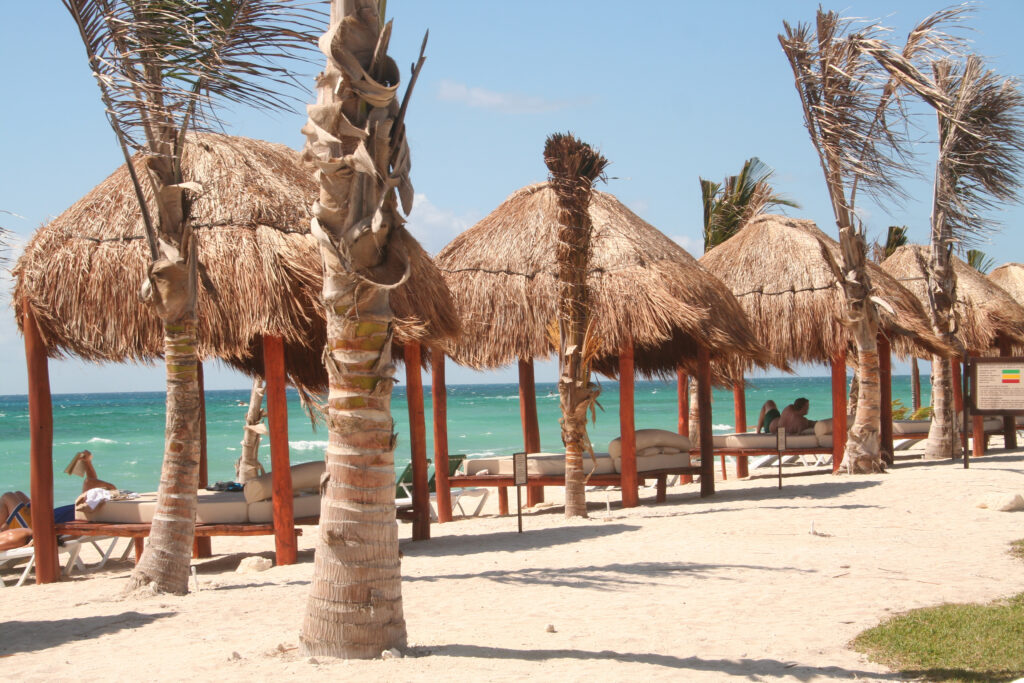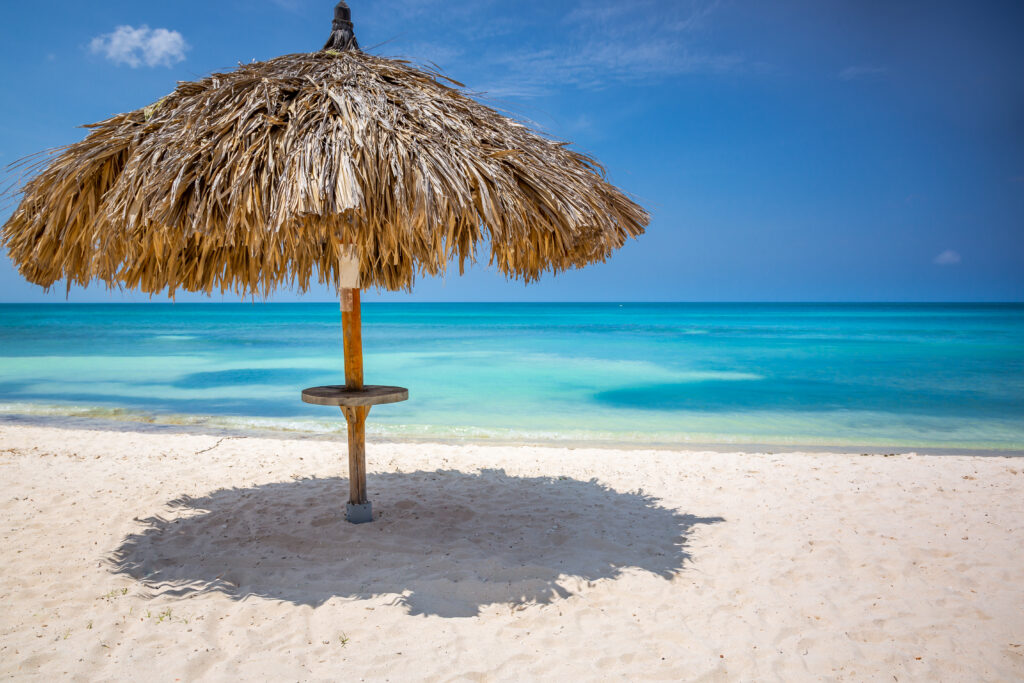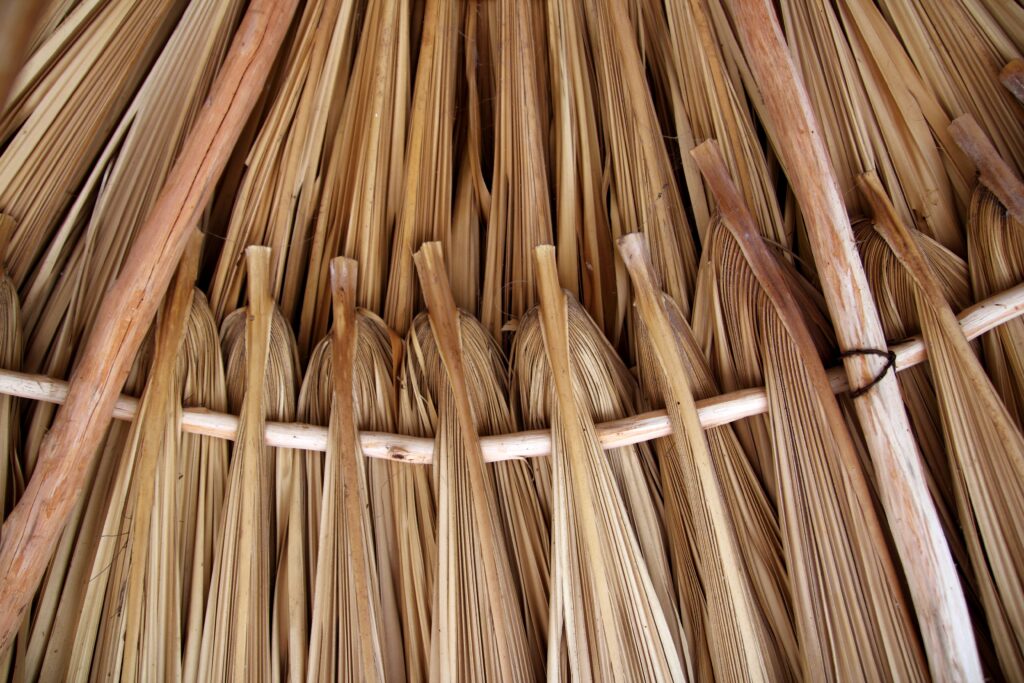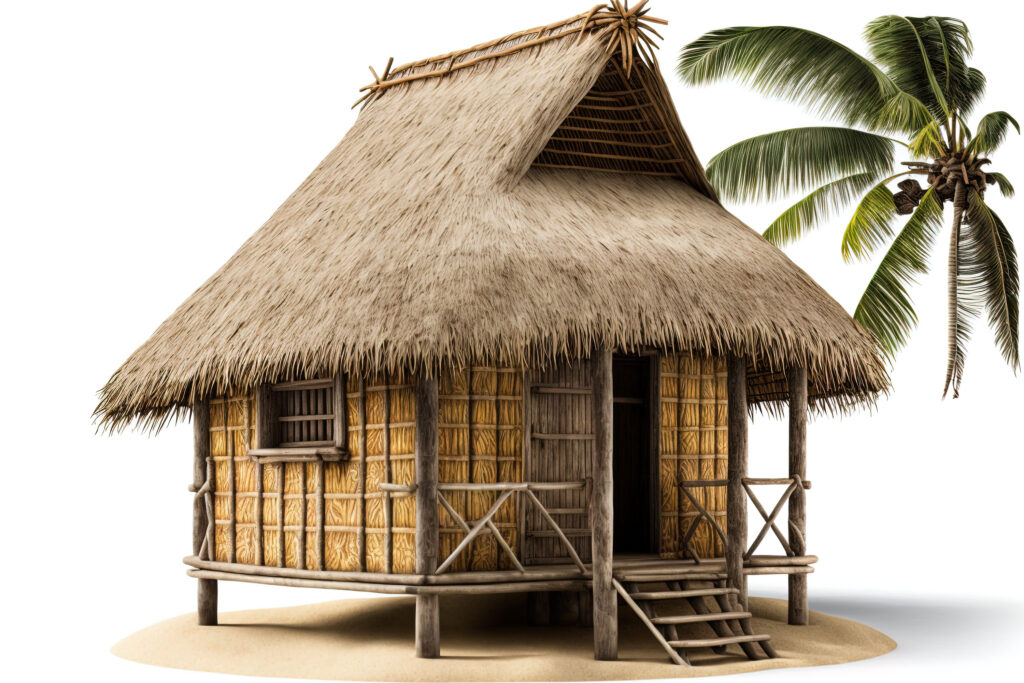Suppose you’re a building design professional looking to add a tropical vibe to your client’s outdoor space, whether you know it or not. In that case, you’re probably considering two popular options: Palapas vs. Tiki Huts.
Everyone on the A-Team at AIBD had always assumed that “Tiki Hut” was the only name for this type of structure. However, we recently learned that there is a type of Tiki Hut called a Palapa, with some subtle differences.
We are in the same boat if you haven’t heard or didn’t know! It’s always great to learn something new, and now we can both appreciate the different names of these tropical structures.
Homeowners who live in backyards with a tropical vibe often experience feelings of relaxation, joy, and contentment. The lush greenery, vibrant colors, and natural materials associated with tropical outdoor spaces can create a sense of peace and tranquility. Being surrounded by nature and feeling connected to the outdoors can also promote well-being and happiness.
Additionally, homeowners may feel a sense of pride in their outdoor space, as it provides a beautiful and inviting setting for entertaining guests and spending time with loved ones. Overall, a tropical-inspired backyard can evoke positive emotions and enhance homeowners’ overall quality of life.
While both structures are commonly associated with island living and relaxation, there are a few key differences that you should keep in mind when recommending either option to your clients.
Palapas

A palapa is an open-sided dwelling with a thatched roof of dried palm leaves. It is beneficial in hot weather and, therefore, very common on Mexican beaches and deserts.
The standard shapes of an authentic Palapa can vary, but the most common forms are circular. Circular Palapas are often used for smaller structures or decorative purposes. Square Palapas are popular for larger outdoor spaces such as patios or restaurants as they provide more shade coverage. Rectangular Palapas are ideal for longer outdoor spaces like walkways or dining areas.
The structure of an authentic Palapa is typically built using natural materials such as wooden poles or bamboo for the support structure and dried palm leaves for the thatched roof.
First, the wooden or bamboo poles are set into the ground to create the support structure. The number and placement of these poles will depend on the size and shape of the Palapa.
Next, a wooden or bamboo cross beams framework is added to connect the poles and provide additional support.
Once the support structure is in place, the thatched roof is added. This is done by layering dried palm leaves over the top of the Palapa and tying them together with twine or wire.
The palm leaves are then trimmed and shaped to create a smooth, even surface for the roof. The thickness of the thatch can vary depending on the desired level of shade and protection from the elements.
Finally, decorative touches such as woven rope or bamboo mats may be added to the edges of the roof to give the Palapa a finished look.
It’s important to note that the construction of a Palapa can vary depending on the region and the builder. For example, some may use different types of wood or bamboo, while others may use different methods for securing the palm leaves to the roof.
Ultimately, the shape of a Palapa is determined by the size of the space it will occupy and the desired level of shade coverage. However, the basic structure of a Palapa remains the same, focusing on natural materials and a thatched roof made from dried palm leaves.
The Pros of Palapas:

The “Island” Atmosphere
Known for creating a unique and authentic “island” atmosphere due to their traditional Mexican origins and their use of natural materials, Palapas create a unique and authentic “island” atmosphere.
Often built with a gentle slope, the thatched roof is one of the most distinctive features, and when placed in an outdoor setting, this roofing material creates an organic feel and a sense of being in a natural oasis, which can evoke feelings of relaxation and tranquility.
Excellent Shade
The thick layers of dried palm leaves used in the roof’s construction provide a natural barrier against the sun’s rays, creating a cool and shaded area beneath the structure. The layers of palm leaves are also spaced apart in a way that allows for natural ventilation to occur, which helps to circulate air and keep the shaded area cool.
Palapas are custom-designed to fit the specific dimensions of the outdoor space, ensuring that the shaded area meets the homeowner’s or business’s needs.
Cost-Effective
Compared to other shade structures, such as pergolas or covered patios, Palapas can often be a more cost-effective option. For example, a wooden pergola can cost anywhere from $3,000 to $8,000 for a standard size, while a custom-built covered patio can cost upwards of $10,000 to $20,000 or more. A Palapa can cost anywhere from $700 to $3,500, depending on the size and design.
Low Maintainance
Another cost comparison to consider is the maintenance cost associated with each structure. Palapas are relatively low maintenance, requiring only occasional cleaning and repairs to the thatched roof. In contrast, covered patios may require regular maintenance such as painting, staining, and replacing worn-out roofing materials.
The Cons of Palapas:

High Winds or Heavy Rain
Palapas are unsuitable for high winds or heavy rain areas because their thatched roofs are more susceptible to damage. The palm leaves used in the roof’s construction can become loose or ripped apart in high winds, leaving the structure vulnerable to further damage. Similarly, heavy rain can cause the palm leaves to become waterlogged and heavy, which can put additional stress on the support structure.
In areas where high winds or heavy rain are expected, other types of shade structures may be a more suitable option. For example, pergolas or covered patios made from more durable materials like wood or metal may withstand harsher weather conditions. Additionally, these structures can be customized with waterproof or weather-resistant roofing materials to provide better protection against the elements.
It’s important to note that Palapas can still be viable in areas with mild weather conditions or where they can be protected from the elements. Proper maintenance, such as regularly replacing worn-out palm leaves, can also help prolong the structure’s life.
Less Protection From the Elements
In addition to the solid construction and roof materials, Tiki Huts are often designed with walls or half-walls that offer additional protection from the elements. This design feature helps create a more enclosed space, benefiting areas with high winds or heavy rain.
While Palapas offer shade coverage and some protection from the elements, they are best suited for use in areas with mild weather conditions or as decorative structures rather than functional ones. In comparison, Tiki Huts are better suited for areas where protection from the elements is a top priority, such as outdoor living spaces or commercial establishments like bars and restaurants.
Tiki Huts: The Polynesian-Inspired Structures

Tiki Huts, on the other hand, are Polynesian-inspired structures that typically feature a frame made of wood or bamboo and a thatched roof made from palm leaves or other materials. Tiki Huts are often associated with tropical bars and restaurants but are also great for residential backyards.
The Pros of Tiki Huts:
Fun and Festive
Tiki Huts are better at creating a fun and festive atmosphere than Palapas because of their more elaborate and eye-catching designs. Tiki Huts often feature intricate and detailed carvings on the support poles, which can add a unique and playful touch to the structure. In addition, the use of colorful fabrics or decorations, such as strings of lights, flower garlands, or other tropical motifs, can further enhance the visual appeal of the Tiki Hut.
Moreover, Tiki Huts are often designed to be larger and more spacious than Palapas, which makes them ideal for social gatherings, parties, and other events. The enclosed design of some Tiki Huts can also create a more intimate and cozy atmosphere conducive to socializing and having fun.
In contrast, Palapas are often designed with a more natural and organic look that may not be as visually striking as Tiki Huts. As a result, while Palapas can still create a relaxed and laid-back atmosphere, they may not be as effective at creating a festive or playful environment as Tiki Huts.
Excellent Protection
Yes, it is established that Tiki Huts provide excellent protection from the elements, including wind and rain. Tiki Huts are typically constructed using solid construction and roof materials. Being designed with walls or half-walls that offer additional protection from the elements, the Tiki Hut design creates a more enclosed space, which can be beneficial in areas with high winds or heavy rain.

Durability
Tiki Huts are typically constructed using more sturdy materials, making them more resistant to wear and tear than Palapas. Tiki Huts are often designed with solid roofs made from palm fronds, thatch, or shingles. These materials provide better protection against the sun, wind, and rain than the thatched roofs of Palapas.
While it is true that Tiki Huts are typically more resistant to wear and tear than Palapas, Both Tiki Huts and Palapas require regular maintenance to ensure their longevity and functionality. This can include treating the wood with sealant or varnish to protect against rot and decay, cleaning the roof periodically to prevent debris buildup, and replacing worn-out or damaged roofing materials.
Versatile in Design
Palapas can be customized to fit a specific outdoor space. Palapas are available in various sizes and shapes, and their support structure can be made from wood, bamboo, or metal, allowing for customization to fit the desired aesthetic and functional needs best.
However, regarding versatility in design, Tiki Huts offer more options than Palapas. This is because Tiki Huts are typically constructed using materials that can be carved or shaped into intricate designs and patterns. Additionally, Tiki Huts can be customized with various decorative elements such as colorful fabrics, flower garlands, decorative lighting, and other tropical motifs.
Moreover, Tiki Huts can be designed to include features such as built-in seating, bars, and lighting fixtures, which can enhance their functionality and appeal. The enclosed design of some Tiki Huts can also create a more intimate and cozy atmosphere conducive to socializing and relaxation.
The Cons of Tiki Huts:

More Expensive
Tiki Huts are generally more expensive than Palapas because of their larger size, sturdier construction, and more intricate designs. The specific cost of each will vary depending on factors such as the size, materials used, and any additional features or customization options selected.
Generally, a Palapa is a more affordable option than a Tiki Hut. A small Palapa structure can cost anywhere from $700 to $3500, while larger structures can range from $2000 to $5000 or more, depending on the size and materials used.
In comparison, Tiki Huts can cost significantly more due to their larger size, use of more expensive and durable materials like bamboo, and customization options. A basic Tiki Hut can cost around $4,000 to $6,000, while more extensive and elaborate structures with additional features like built-in seating, bars, and lighting fixtures can cost up to $15,000 or more.
Moreover, the installation process for Tiki Huts is typically more involved and labor-intensive than for Palapas, which can increase the overall cost. Tiki Huts require professional installation due to their larger size and more complex construction.
Choosing the Right Option for Your Client’s Needs
Although it may not make a big difference with your clients what you call the building, when recommending either Palapas or Tiki Huts to your clients, it might be fun to share your knowledge.
And regardless of the title, first think about the size and shape of the outdoor space. Next, think about the placement of the structure. Finally, ensure your design suits areas with high winds or heavy rain.
Finally, consider the environment that the structures will be subjected to. For example, will it include natural ventilation or partially enclosed protection against the elements?
Considering these critical considerations, you can confidently recommend the proper structure for your client’s outdoor space.
Here’s an idea, if the structure is designed to house the outdoor BBQ equipment, how about calling it a “Man-bana?” Okay, we’ll go back to the drawing board.
Free Email Marketing for Building Designers Email Course
You'll also receive our latest content by email.
